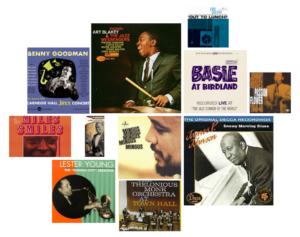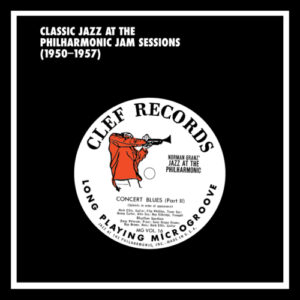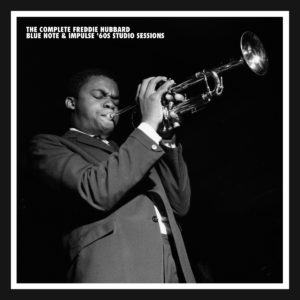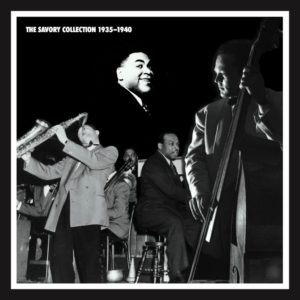
100 Essential &
Best Jazz Albums Of All Time
Page 1/3
“Jazz and the phonograph were made for each other. Without the medium of recording, a music so defined by spontaneity of invention, individuality of instrumental sound, and rhythmic complexity that defies musical notation could not have been so rapidly or wholly disseminated, nor lent itself to rehearing, studying, and copying. Without recordings, jazz might have remained a temporary regional phenomenon.” – Dan Morgenstern, Living With Jazz
CANNONBALL ADDERLEY
SOMETHIN’ ELSE
One of the best jazz album dates in the history of modern jazz, the chemistry among Adderley, Miles Davis, Hank Jones, Sam Jones and Art Blakey is amazing. Their radical reworkings of “Autumn Leaves” and “Love For Sale” are essentials.
CANNONBALL ADDERLEY
KNOW WHAT I MEAN?
A memorable 1962 reunion between Adderley and Bill Evans with Percy Heath and Connie Kay. Beautiful versions of Evans’s “Waltz For Debby,” Clifford Jordan’s “Toy” and Phil Silvers’s “Nancy (With The Laughing Face).”
GENE AMMONS
BOSS TENOR
Ammons’ signature album, thanks in part to the success of his version of “Canadian Sunset”, features his magnificent, commanding big-toned tenor on seven blues and ballads supported by the first class rhythm section of Tommy Flanagan, Doug Watkins, Art Taylor and Ray Barretto.
Louis Armstrong
The Complete Hot Fives & Sevens
The most essential jazz music ever made. All 80 tracks by Louis’ Hot Five and Hot Seven (1925-28) with Johnny Dodds, Kid Ory, Lil Armstrong and Earl Hines.
Featured Track: Hotter Than That
By the time we get to “Hotter Than That” from late 1927, the New Orleans ensemble sound is mostly gone. It is now a string of solos from start to finish, Armstrong opening the proceedings and setting the bar high on this romp based on the chord changes to “Bill Bailey.” Clarinetist Dodds and trombonist Ory contribute exciting outings but both sound primitive after Armstrong’s seamless brand of swing. In the middle of the record, we hear Armstrong’s distinct voice for the first time in a stunning display of scat singing.
The Louis Armstrong song “Heebie Jeebies” had put scat on the map but he turns the “nonsense singing” into high art here during his duet with special guest Lonnie Johnson, another New Orleans native and a pioneer guitarist.
In the final chorus, Armstrong uncorks a spiraling ascending phrase before hammering home a two-note riff over and over, foreshadowing a decade’s worth of big band writing that would follow his achievements in shaping jazz of the 1920s. Armstrong’s playing was now stimulated by younger contemporaries who grasped his concept on how to solo and how to swing. Having transformed jazz from an ensemble-based music into a soloist’s art, Armstrong bid adieu to the original Hot Five shortly after this session.
LOUIS ARMSTRONG AND KING OLIVER
Oliver’s 18 landmark 1923 Gennett recordings with Louis Armstrong, Lil Hardin, Johnny Dodds and Baby Dodds, as well as 7 Gennett/ Paramount tunes by the Red Onion Jazz Babies with Louis.
CHET BAKER QUARTET WITH RUSS FREEMAN 1953
The trumpeter’s first quartet included the essential Russ Freeman as pianist and musical director. All 25 tracks recorded by this quartet in July and October of 1953 are gathered on this one CD. Freeman’s dazzling themes and his hard driving piano are the perfect foil for Chet’s personal, lyrical trumpet style. Always an instinctive player, Baker’s solos flow with one melodic idea after another.
THE BEST OF CHET BAKER SINGS
The classic album “Chet Baker Sings” which introduced Chet’s vulnerable vocal style is presented with greatly improved sound and six added tracks, all by the quartet with Russ Freeman. Includes “Let’s Get Lost”, “But Not For Me”, “My Funny Valentine”, “I Fall In Love Too Easily” and 16 more.
CHET BAKER & ART PEPPER
PICTURE OF HEATH
Originally titled “Playboys,” this hard swinging 1956 session features Chet and Art Pepper with Phil Urso, Carl Perkins, Curtis Counce and Lawrence Marable on seven superb Pepper and Jimmy Heath compositions.
Count Basie
The Complete Decca Recordings
The first recordings by this trend setting orchestra that set new and uniquely individual standards because of the highly superior improvisors including Lester Young, Herschel Evans, Buck Clayton, Sweets Edison, Benny Morton and, naturally, the “All American Rhythm Section”, Freddie Green, Walter Page, Jo Jones and leader Basie. The arrangements (many of the classics by trombonist / guitarist Eddie Durham) and the execution of these arrangements, make these recordings some of the greatest during the Swing Era or of any era. Top that off with two top vocalists with their display of blues and pop tunes, Jimmy Rushing and Helen Humes.
Featured Track: Swingin’ The Blues
Just one of the many classic Basie Decca sides that stayed in the Basie book for many years. Basie starts in and then solos by both Pres and Herschel plus the newcomer in the band Sweets Edison are showcased and then the band trades riffs with some magnificent drum breaks by Jo Jones.
COUNT BASIE
THE ATOMIC BASIE
On October 21 and 22, 1957, Basie’s band, sounding better than ever, went into the studio to cut 11 new volcanic Neal Hefti charts. Every tune became a classic, changing the course of this great band and this gifted composer-arranger. One of his best jazz albums.
COUNT BASIE
BASIE AT BIRDLAND
June 1961. The atomic band at its peak, off the road and playing at the club they call home – it doesn’t get any better. Basie kicks off most tunes, tiptoeing around the melody to find the perfect tempo. Then BAM! Sonny Payne brings that glorious, roaring big band in swinging mercilessly.
BIX BEIDERBECKE AND THE CHICAGO CORNETS
Twenty-eight Gennett recordings, including all 15 Bix sides with The Wolverines, four others by Bix, and Muggsy Spanier’s Bucktown Five recordings, all from 1924-25.
SIDNEY BECHET
BEST OF THE BLUE NOTE YEARS
Eighteen of Bechet’s greatest performances from 1939 to ’53 including “Summertime”, “Muskrat Ramble”, “Jelly Roll” and “Black And Blue” with such sidemen as Wild Bill Davison, Albert Nicholas, Art Hodes, Joe Sullivan, Pops Foster and Big Sid Catlett.
ART BLAKEY
A NIGHT AT BIRDLAND
On the evening of February 22, 1954, Blue Note recorded Art Blakey’s quintet at Birdland and the jazz landscape changed forever. Art Blakey, already the most exciting drummer in modern jazz, established himself as a bandleader with an ear for young talent. Trumpeter Clifford Brown, alto saxophonist Lou Donaldson and pianist/composer Horace Silver became major players on the scene. One of the best live jazz albums.
ART BLAKEY
MOANIN’
Art Blakey’s most successful album gave us Bobby Timmons’s “Moanin’” and Benny Golson’s “Along Came Betty” and “Blues March,” tunes so powerful that Blakey played them almost every night for the next 30 years. This beautifully performed and recorded session made the Jazz Messengers a jazz institution and put Golson, Timmons and Morgan to the forefront of jazz.
Art Blakey
Mosaic
This is a remarkable album is by the most explosive edition of the Jazz Messengers. Blakey had just expanded the group to be a sextet, adding trombone, and found himself with four phenomenal composers. The originals include Cedar Walton’s intricate title tune played with fire and brilliance, Wayne Shorter’s “Children Of The Night,” Curtis Fuller’s “Arabia” and Freddie Hubbard’s “Crisis” and “Down Under.” The band swings relentlessly and executes each piece to its full potential. One of the most memorable records of an amazing era.
Featured Track: Mosaic
Cedar Walton’s “Mosaic” is a multi-layered and multi-sectional composition that this ensemble nails with ease. Wayne Shorter, Freddie Hubbard, Curtis Fuller and Cedar Walton all solo in their distinctive styles, leading up to a tour-de-force drum solo. Every solo on this piece is superb, but it is worthy pointing out the amazing technique and execution required to pull a solo like Curtis’s on the trombone
CLIFFORD BROWN
MEMORIAL ALBUM
This astonishing trumpeter was fluid, fiery and fully formed on his first two sessions in 1953, a quintet with Lou Donaldson and Elmo Hope and a sextet with Gigi Gryce, Charlie Rouse and John Lewis. Includes a stunning “Easy Living” and great compositions like “Wail Bait”, “Hymn Of The Orient”, “Carvin’ The Rock” and “Brownie Speaks”.
DAVE BRUBECK
TIME OUT
The experiment with time signatures that became one of the most popular jazz recordings in history. With Paul Desmond, Gene Wright and Joe Morello. Includes “Take Five” and “Blue Rondo à la Turk.” On everyone’s list of best jazz albums.
KENNY BURRELL
MIDNIGHT BLUE
Without piano, Burrell, Stanley Turrentine and company get a clean open sound and a deep groove on such now classic jazz music compositions as the title tune and “Chitlins Con Carne”, which has become a blues band staple. A masterpiece from first note to last.
SERGE CHALOFF
BLUE SERGE
One of the original four brothers in the Herman Herd, Chaloff was a pioneer of the modern baritone saxophone. This is his finest album, recorded in 1956 with Sonny Clark, Leroy Vinnegar and Philly Joe Jones. He gives his horn buoyancy on beautiful solo flights through standards like “A Handful Of Stars” and “All The Things You Are” as well as jazz tunes like Al Cohn’s “The Goof And I.”
DONALD BYRD
A NEW PERSPECTIVE
The idea of a jazz group and vocal chorus is an unlikely one. But what Donald Byrd and Duke Pearson accomplished in this 1963 session was more than an innovative experiment. It is music of exquisite beauty typified by the classic “Cristo Redentor.” Hank Mobley, Kenny Burrell and Herbie Hancock are among the sidemen.
CHARLIE CHRISTIAN
THE GENIUS OF THE ELECTRIC GUITAR
A pioneer and one of the greatest jazz guitarists, the innovative Charlie Christian wrote the template on his instrument for next forty years. This essential set with great sound contains the complete Columbia masters and alternate takes by the Benny Goodman Sextet featuring Christian and either Lionel Hampton or Cootie Williams as well as tracks with Goodman’s orchestra and the Metronome All-Stars.
NAT KING COLE
THE KING COLE TRIO
The King Cole Trio with Oscar Moore and Johnny Miller was the epitome of taste and creativity. They used the piano-guitar-bass combination to retool everything from be-bop to hit pop. These three volumes cover the best of the group from 1942-50 with 18 stunning instrumentals and 44 vocals of great variety.
ORNETTE COLEMAN
CHANGE OF THE CENTURY
The second album by the phenomenal quartet of Coleman, Don Cherry, Charlie Haden and Billy Higgins (October 1959). They breathed and swung as one on such Ornette classics as “Ramblin’” and “Una Muy Bonita”.
ORNETTE COLEMAN
THE SHAPE OF JAZZ TO COME
After introducing his striking saxophone and composing style on two Contemporary albums, Ornette found the perfect ensemble with Don Cherry, Charlie Haden and Billy Higgins. The music on their first album, made in May 1959, is bold, joyful, adventurous and refreshing. An essential jazz album that ranks as one of the best free jazz albums.
ORNETTE COLEMAN
TOWN HALL CONCERT
On this 1962 farewell concert (he retired for three years thereafter), Coleman introduced his amazing trio with David Izenson and Charles Moffett. His heart-wrenching, plaintive alto soaring above Izenson’s bowed bass on “Sadness” is among the most powerful music ever recorded.
ORNETTE COLEMAN
THE COMPLETE SCIENCE FICTION SESSIONS
The great ’71-72 sessions, issued on “Science Fiction” and “Broken Shadows”, have been called his creative rebirth. The original quartet with Don Cherry, Charlie Haden and Billy Higgins and a quintet with Dewey Redman, Bobby Bradford, Haden and Ed Blackwell perform three tunes each. Then they combine for four powerful septet performances. The writing and playing is electrifying.
JOHN COLTRANE
BLUE TRAIN
His first great jazz album masterpiece with Lee Morgan, Curtis Fuller, Kenny Drew, Paul Chambers and Philly Joe Jones. All of Coltrane’s compositions are classics. The superbly executed and blended ensembles have a haunting quality and each solo is a memorable treasure.
JOHN COLTRANE
GIANT STEPS
Coltrane crystallized his “sheets of sound” and introduced his best known compositions on this groundbreaking 1959 Atlantic album, with rhythm sections led by Tommy Flanagan, Wynton Kelly and Cedar Walton.
JOHN COLTRANE
MY FAVORITE THINGS
This is the album that introduced and defined the sound of the great Coltrane quartet with McCoy Tyner and Elvin Jones. And modern jazz music was never the same. Their radical reworkings of four standards are breathtaking.
JOHN COLTRANE
LIVE AT THE VILLAGE VANGUARD – THE MASTER TAKES
Five legendary November 1961 Village Vanguard performances by the quartet chosen by Coltrane for the release at the time. The three tracks from “Live At The Village Vanguard” plus two from “Impressions.” These are some of the most influential and exciting pieces of Coltrane’s career. Eric Dolphy is added to the quartet on “Spiritual” and “India.”
John Coltrane
Crescent
At once serene and exploratory, this exquisite masterpiece by the classic quartet is perfectly constructed and executed. Coltrane’s five compositions are varied and among the finest that he ever wrote. The music is rich in texture but in a rarified air as four master musicians listen intently to each other and create sublime interaction. Many consider this to be the greatest album by this band. Includes “Lonnie’s Lament” and “Bessie’s Blues.”
Featured Track: Lonnie’s Lament
The somber but beautiful melody of “Lonnie’s Lament” is played by Coltrane over rubato accompaniment by McCoy Tyner, Jimmy Garrison and Elvin Jones. They move into straight time for McCoy’s solo, a brilliant series of variations on the composition. Jimmy Garrison takes a long, unaccompanied solo/ before Coltrane comes back in for the melody. It makes no difference that Trane doesn’t solo. The quartet itself is the voice of this album.
JOHN COLTRANE
A LOVE SUPREME
Not only one of Coltrane’s most important recordings, but also one of the most greatest jazz albums ever made. This four-part suite by the classic quartet exudes inner peace. The second CD of the deluxe edition contains the only live version of the suite (Antibes, July 1965), an alternate take of “Resolution” and two takes of “Acknowledgement” from the aborted sextet session, made the next day with Archie Shepp and Art Davis added to the quartet. Mastered by Rudy Van Gelder.
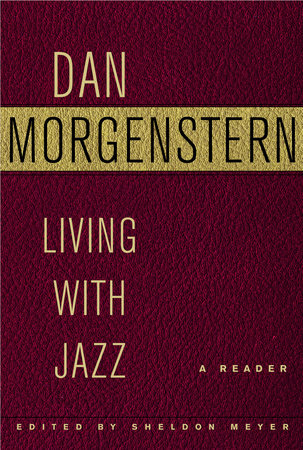
History of Jazz Records & Jazz Recordings
By: Dan Morgenstern (edited excerpt)
Jazz and the phonograph were made for each other. Without the medium of recording, a music so defined by spontaneity of invention, individuality of instrumental sound, and rhythmic complexity that defies musical notation could not have been so rapidly or widely disseminated, nor lent itself so readily to rehearing, studying, and copying. Without recordings, jazz might have remained a temporary regional phenomenon.
Yet the ideal union between two near-contemporaneous artistic and technical inventions took time to be consummated. The fledgling record industry saw jazz as strictly a salable new kind of dance music and had not the slightest awareness of or interest in its potential as art. (Nor, admittedly, did any but a handful of its practitioners.)
The first jazz recording
The first genuine jazz captured by a recording device was played by the Original Dixieland Jazz Band in the New York studio of Columbia Records on January 30, 1917. Just two weeks earlier, these five young white New Orleans musicians had opened at a midtown Manhattan spot for dining and dancing, creating more of a stir than during an entire previous year in Chicago. The band recorded two numbers for Victor, which promptly issued them. “Livery Stable Blues” and “Original Dixieland Jass [sic] Band One-Step” became one of the best-selling records of its day.
The new technology worked particularly well for large ensembles, and Henderson’s was by no means the only big jazz band now sounding better on discs. Duke Ellington first recorded in late 1924 at the helm of a sextet. Two years later he had ten pieces and was in the process of becoming the first jazz artist to realize that the medium of recording was fundamentally different from live performance.
In the mid-1920s, recordings of popular music still ran a distant second to sheet-music sales as a source of income for publishers, and many performers also saw them mainly as an extension of song-plugging and a tool for promoting in-person appearances. Not so Ellington, who soon made himself the master of the three-minute musical gem and paid close attention to the proper placement of players in the studio and to the special tonal characteristics of that new contraption, the microphone.
Louis Armstrong & Bix Beiderbecke 1920s historical jazz recordings
Armstrong, who late in 1925 began the extraordinary series of Hot Five and Hot Seven recordings for OKeh in Chicago, now became the first jazz artist to demonstrate the true power of the phonograph record. Musicians throughout the United States and abroad (his records were soon issued in Europe; the record business was international) learned Armstrong solos by heart, and his way of phrasing a melody or parsing the rhythm caught on with arrangers as well as instrumentalists.
But perhaps the single most influential record in this period was made by an ad hoc recording unit, drawn mainly from the ranks of the Jean Goldkette band, under the leadership of C-melody saxophonist Frank Trumbauer and featuring solos by himself and Bix Beiderbecke. The profound impact of “Singin’ the Blues” on musicians black and white was due to the quality and length of the two solos (both complete choruses), the relaxed tempo (slower than customary for the tune, a standard in the repertory of jazz and dance bands), and the fact that neither soloist stated the melody – for 1927, this was extended improvisation.
John Hammond and his talent roster
In 1932 a new chapter in the story of jazz on records began when John Hammond became active as a producer. Motivated solely by a commitment to the music and its makers, regardless of race, modified only by strong personal preferences, he was young and fearless. Hammond had been writing about American jazz for Britain’s Melody Maker and now started to produce records for Columbia’s London-based branch.
His talent roster included Benny Carter with the marvelous young pianist Teddy Wilson, Fletcher Henderson (“Talk of the Town” featured Coleman Hawkins’s longest recorded solo to date), a Joe Venuti led all-star group, and Benny Goodman with Jack Teagarden and in 1933 with an unknown teenaged singer named Billie Holiday. By 1934 Goodman was leading his first big band and recording with it, Hammond serving as his adviser.
Small independent jazz record companies
The existence of an independent jazz label like Commodore made it possible to record, when Hammond’s bosses turned down the idea, some of the finest small-group swing music of the decade, which had introduced Lester Young to records. Now another Basie spinoff, this time without the leader, or any piano, but with two guitars—one electric—and Young doubling clarinet , recorded for Commodore as the Kansas City Six some jazz gems that have seldom been out of circulation since.
The label also played a key role in Billie Holiday’s career. She was still contracted to Vocalion, now owned by CBS, and Hammond was still her producer, but they were most reluctant to let the singer record a very unusual song recently added to her repertory at Café Society, the country’s only nightclub catering to integrated audiences.
This was “Strange Fruit,” which dealt in unsparing terms with lynching. Holiday approached Gabler, long her friend, who persuaded Hammond to loan the singer to Commodore for one date. As it turned out, the controversial song’s flip side, a blues, “Fine and Mellow,” concocted by Holiday and Gabler for the occasion, became the label’s first modest hit.
By 1946 Charlie Parker was recording for still another label spawned by a record store, Ross Russell’s Dial, based in Los Angeles. Dial also signed a former Savoy artist, Dexter Gordon, whose double-sided 78 “tenor battle” with Wardell Gray, “The Chase,” transcended bop and appealed to the same listeners who responded so well to Hampton and Basie alumnus Illinois Jacquet, the tenor spark plug of early Jazz at the Philharmonic.
Birth of the LP
The LP, introduced in a 10-inch format, was initially perceived primarily as a boon to classical music, since long works could now be recorded without the annoying pauses or cuts mandated by 78s. For jazz and popular music, the LP was seen mainly as a compact compilation medium, in the image of the 78 album.
This format had become increasingly popular for jazz reissues during the recording ban, but lingered on beyond it. Columbia led in this field, but Victor as well as Decca and its subsidiaries also had been active, and now these labels all converted them to LP, sometimes adding material.
It was one of the new independent jazz labels that pointed the way to creative use of the new technology. Prestige included an eight-minute excursion by tenorman Zoot Sims, “Zoot Blows the Blues,” as a track on an LP-a prelude to the “blowing sessions” the label would soon specialize in.
This formula called for gathering a bunch of compatible horn players, bringing them together with a strong rhythm section, and maximizing studio time to generate several lengthy, jam session-like pieces, sometimes taking up an entire side of an LP (the soon-prevailing 12-inch format included).
Columbia also launched a series of studio jam sessions under the leadership of ex-Basie trumpeter-arranger Buck Clayton, produced by George Avakian with Hammond. Blue Note, which gradually had moved from revivalist jazz to swing, now entered the modern field with a coup, courageously and successfully recording pianist-composer Thelonious Monk in his debut as a leader. Excepting a lingering loyalty to Sidney Bechet, greatly admired by the label’s founder, Alfred Lion, and his partner, Francis Wolff, Blue Note now focused on modern jazz.
Norman Granz and Verve’s jazz recordings
No jazz label was more prolific or prolix than Norman Granz’s Verve, or less tied to the bottom line. His multiple Jazz at the Philharmonic releases included the first jazz LPs to be marketed in boxed sets, and he commissioned fine cover art, notably from David Stone Martin.
Some of his ventures, such as the Ella Fitzgerald Song Book series, were commercial successes (and prime examples of how intelligent record production and packaging and promotion can boost an artist’s career) while others were not, among them several first-rate LPs featuring the altoist Lee Konitz and those starring veteran jazz violinist Stuff Smith.
But Granz recorded who and what he liked–no one more frequently than the pianist he had first brought from Montreal to Carnegie Hall, Oscar Peterson. Granz’s loyalty to great jazz figures no longer in their prime (Lester Young and Billie Holiday, and later Coleman Hawkins) has no parallel.
Possibly his crowning achievement was his Art Tatum project, which over the last four years of the great pianist’s life yielded more than a dozen solo piano albums as well as great encounters with peers Benny Carter, Roy Eldridge, Ben Webster, Lionel Hampton, Buddy DeFranco, and Buddy Rich. Granz sold Verve in 1961 but returned to the fray in 1973 with Pablo, for which he bought back his Tatum masters, re-signed Fitzgerald, Peterson, and Eldridge, and continued to behave more like a patron of the arts than a businessman.
The shiny, compact 60 minute CD
When the CD was introduced, forecasters anticipated a decade-long co-existence with the LP, but the handy new format established itself in half that time. “Vinyl,” as the LP is called in the CD era, survives in occasional limited editions aimed at collectors and audiophiles and at second hand in a lively international collectors’ market. The LP’s reign was shorter than the 78’s, and at the turn of the century it seems certain that the days of the CD are numbered. The format, however, has long since made its mark on jazz.
With disc duration averaging an hour, it confronted the artist with the very real problem of how to sustain sufficient listener interest, notably when he or she was expected to record with some frequency. A result has been the proliferation of original compositions, many of which are neither. Another, since CDs are much easier than LPs to store, carry, and even produce, is an abundance of self-produced records. There are very many small labels as well, usually specializing in niche markets.
- Dan Morgenstern, Living With Jazz, reprinted with permission (click link to purchase)



